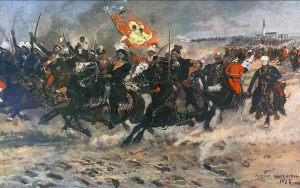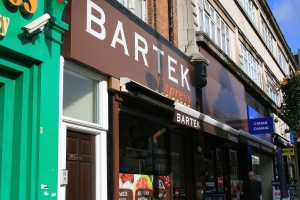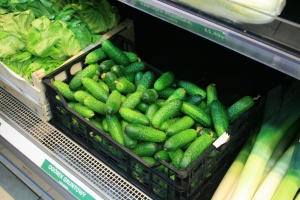Today we commemorate the life of Casimir Pulaski, all-round ferocious fighting machine and hero of the American Revolution! http://tinyurl.com/7wosfxs. My husband has just returned from a business trip to Chicago, where they have a public holiday in his honour on the first Monday of every March.
Pulaski was born on March 6th, 1745, trained to be a soldier from the age of, ooh, about eight, and fought his way around two continents in the name of freedom. He’s worth reading up on. He said of America, “I came here, where freedom is being defended, to serve it, and to live or die for it.” He died for it (of a battle wound, of course), but the King of Poland, hearing of his death said, truthfully, “He died as he lived – a hero, but an enemy to kings.”
Back in south London, Agnes and I went Polski Sklepping at Bartek on the Streatham High Road this week: http://bartek-express.co.uk doesn’t have much more than the address and contacts, but they have a jolly Facebook page, www.facebook.com/BartekExpress.
They’ve just had their third birthday and were doing a pretty brisk trade on a sunny Thursday morning. The shop is bright and modern, and had some interesting fresh produce, including…
Ogorek Gruntowy, aka pickling cucumbers! Thanks to the wonder of agricultural polytunnels you can now buy these bristly little beauties far earlier than their usual summer season, and these were really fresh, with their flower ends still on. Still a bit expensive at £6.99 per kilo, though, so we’ll be leaving the pickling until later this year. Meant to ask Agnes if you can eat them unpickled, but they look a bit thorny for that.
Proper Polish pickled cucumbers are preserved in brine, not vinegar, and you can buy special pickling salt that keeps them crunchy.
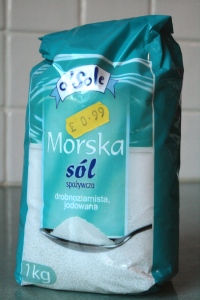 I’d bought some of this sea salt on a previous sklepping trip. At 99p a kilo, it’s cheaper than most of the stuff you’d buy in UK supermarkets, though it’s not claiming to be 100% Polish – the origin actually isn’t specified on the pack. But who cares: if any country should know about salt, it’s Poland.
I’d bought some of this sea salt on a previous sklepping trip. At 99p a kilo, it’s cheaper than most of the stuff you’d buy in UK supermarkets, though it’s not claiming to be 100% Polish – the origin actually isn’t specified on the pack. But who cares: if any country should know about salt, it’s Poland.
Poland is home to two of the world’s oldest salt mines, The Bochnia (http://www.kopalniasoli.pl/en) and Wieliczka (www.wieliczka-saltmine.com), near Krakow. These days they’re a health spa and a stunning tourist attraction – take a look at the cathedrals carved into the rock salt by the workers – rather than a huge industrial enterprise, but they still produce a little mineral-rich salt (by the evaporation method, as the flood-prone tunnels are too dangerous to work now. They were too dangerous to work then, but people did it anyway). The salt contains Iodine, Selenium, Magnesium and Calcium, if you feel your levels need topping up.
You should be able to find Wieliczka salt in most Polish shops, but you can also buy it online at www.wieliczka-saltmine.com/e-shop/s/table-salt .
The producer of the stuff I bought, http://www.osole.com.pl, not only produces rock salt for pickling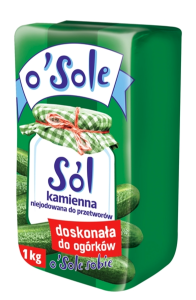 (it’s apparently important to use the non-iodised stuff), but salt with lots of lovely added nitrates for curing sausage and ham, should you come across an obliging pig.
(it’s apparently important to use the non-iodised stuff), but salt with lots of lovely added nitrates for curing sausage and ham, should you come across an obliging pig.
It comes in a pack like the one on the right, but pink, which is a hint: you use this not only to preserve your charcuterie, but to make it look edible. If we didn’t use it in meat processing, everything from pork pies to hot dogs would have that I-am-on-the-edge-of-giving-you-botulism greyish-brown look. Well, make mine pink, please. And salty.

